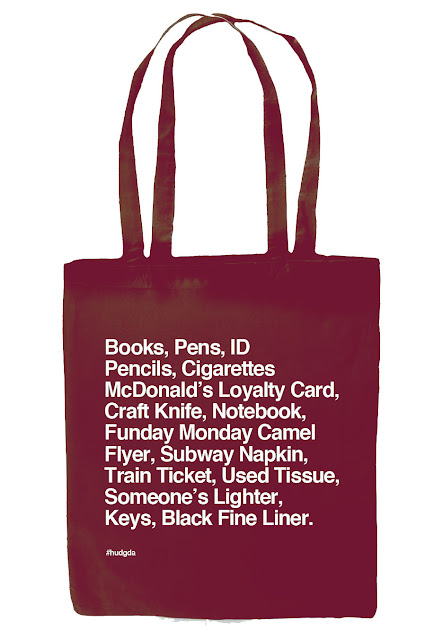This mini brief was to design a screen printed graphic to place on to a tote bag. The theme was amateurs, as this is the year topic in which the year 2's (who receive this product) will conclude the rest of the year following in the style of. We were given a project pack in which the brief was explained a bit more thoroughly, as well as mock ups and files to aid the presenting of our outcome. Right shows the tote bag mock up which was supplied, it was suggested that the fabric colour of the bag could be edited and could be changed to whatever colour was desirable.
Below shows the development of my ideas. The first created was "reused unlike my lecture notes".
Secondly was inspired by my initial sketch incorporating coffee in to the humour of the tote. However I decided against the illustration of the icons, as I couldn't achieve the look of the different coffee's by using spots as only one colour print was available. Therefore type was used to make a joke at a type of coffee available "#000000" also known as black to graphic designers. Finally I produced one which was reflected as a sketch on the bottom left of the drawings above. It was to use a Helvetica type sheet to provide a detailed description as to what was contained in the bag.

This Helvetic one was then further developed. Using the tote bag colours available at the site the university would be printing from, I explored the colour combinations of tote and print to discover what would work best and be more of an interesting colour than black on a plain hessian tote. The specific names given to these colours are listed below the example. It was also advised to enlarge the type to as big as the printing area would allow, this too would make it easier to be identified and read once being used. The type sheet data and format was also changed, the date was removed not to make this exclusive to just one year of use, as well as "the University of Huddersfield" information not being required at the foot of the design. Instead the brief required "#" was then enlarged to add to the digital presence this bag was increasing.
In asking friends and families which colours they would be most likely to use, the ones above were selected. Black with white seemed to be the most popular, however I am quite intrigued by the more subtle colouring of the pale grey on the French Navy bag background colour. It doesn't contrast as strongly, but I think this adds to the hidden humour within the ordinary items, that the text too is also kind of hidden along with the background.























































